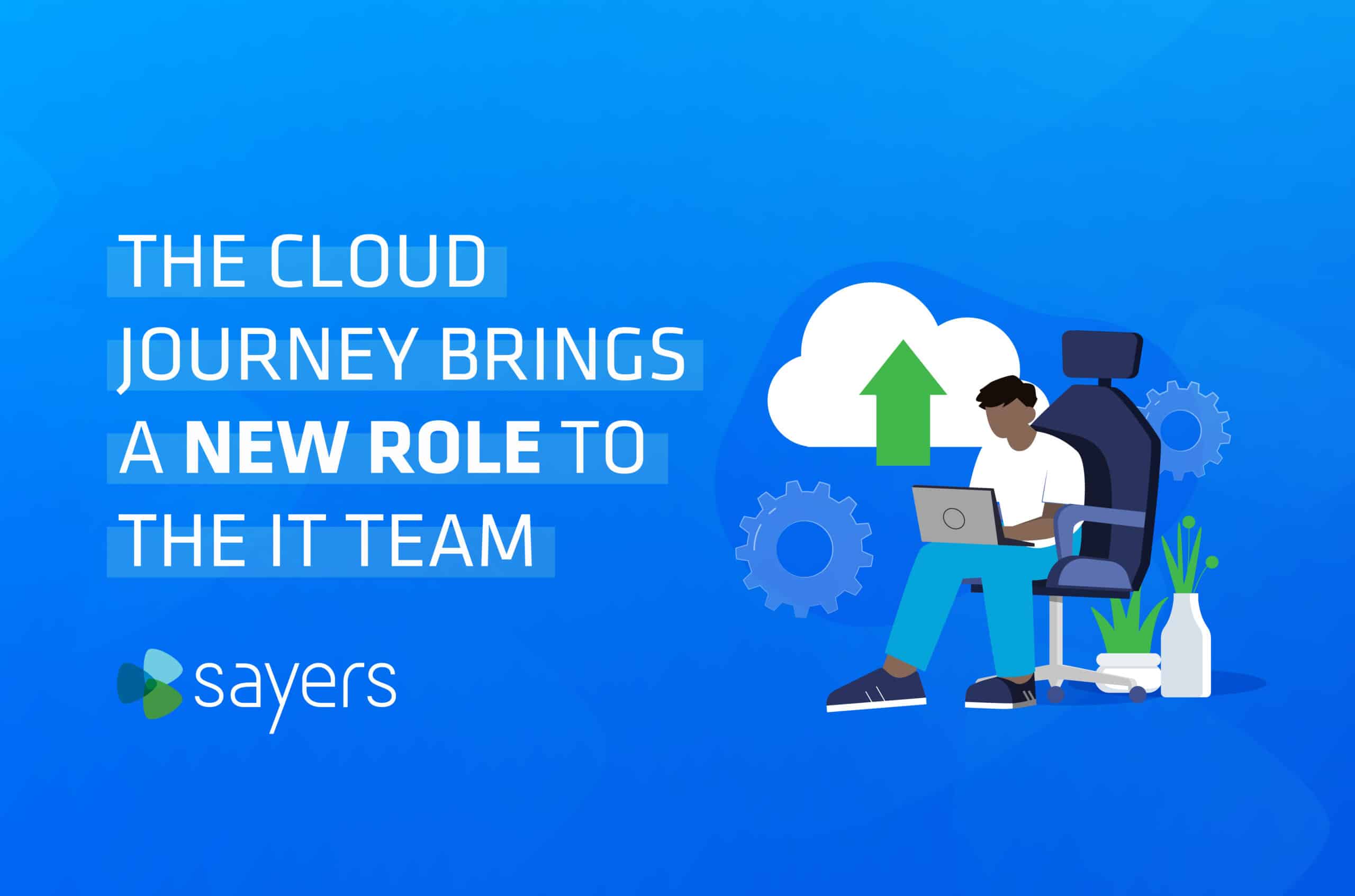


The decision to move some or more of your organization to the cloud goes beyond just spinning up and delivering applications for the enterprise. At Sayers, we also view cloud adoption as a primary part of evolving your IT team from just an expense item into the critical role of a IT Cloud service provider for your business. That can often include the creation of one or many IT Cloud Roles.
In that service provider IT Cloud role, your team plans workloads based on business requirements and better positions your organization to enter new markets and bring more or new services to your end customers.
Moving to the cloud doesn’t have to be an all-or-nothing endeavor. According to Gartner, by 2025, 85% of enterprises will have a cloud-first principle that integrates cloud and edge delivery options along with on-premise and co-location alternatives.
“Cloud-first doesn’t mean cloud-only, it means you’re going to be looking at that Software as a Service (SaaS) and other applications born and built for the public cloud rather than an on-prem, physical asset to run your application.”
Bob Livingstone, Director of Cloud Engineering at Sayers
The role of the traditional data center isn’t going away, just evolving. Some types of applications and workloads are more economically efficient there. But two key trends are driving the shift of more IT spending toward public cloud computing:
As cloud providers, SaaS offerings, edge services, and the Internet of Things continue to proliferate, a hybrid data center topology becomes the new norm. Your IT staff’s skills have to continue to evolve with the right tools, resources, and market knowledge to keep up with more complexity and integration.
“Transformation isn’t just about data center infrastructure,” Livingstone says. “It’s about transforming how infrastructure and operations teams become the service provider in a digitally distributed ecosystem.”
In that ecosystem, partners are taking on important, collaborative roles with hyperscalers like Microsoft and their customers.
The demand for new skills will continue to increase with the move to the cloud. In response, Microsoft has developed a Cloud Solution Provider (CSP) program that enables partners in the Microsoft ecosystem to work with customers and help them on their cloud journey.
CSP partners directly manage the customer’s entire Microsoft cloud customer lifecycle, while providing the same type of customer experience you would expect from having a Microsoft Enterprise Agreement in place. Partners can package their tools, products, and services, and combine them into one monthly or annual customer bill.
IT teams that shift an increasing number of workloads to the cloud are managing less hardware and infrastructure and more SaaS offerings. They can rely on a CSP partner to help identify and understand what’s happening behind the scenes in that environment, so the IT team can focus on configuring the enterprise application and ensuring it scales properly.
Whether you’re starting or continuing your cloud migration, you can make the process smoother and more successful by following a few important steps:
Thanks to Bob Livingstone, Director of Cloud Engineering at Sayers, for his “So You’re Thinking Cloud?” presentation from the Sayers #Curio Virtual Tech Summit. We’ve pulled the above highlights from his 22-minute presentation, now available free on-demand.
Want to know more? Contact us at Sayers today. We are a Microsoft Azure Gold and CSP partner who can answer your questions and help guide you in your cloud strategy.